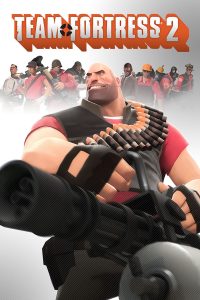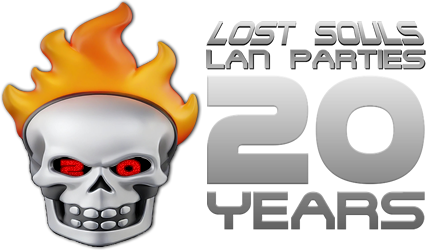
Team Fortress 2 is a team-based first-person shooter multiplayer video game developed by Valve Corporation. It is a sequel to the original mod Team Fortress and its Source engine remake. It was first released as part of the video game compilation The Orange Box . On June 23, 2011, the Windows version of the game became a free-to-play title, supported by microtransactions for unique in-game equipment through Steam. The development of Team Fortress 2 is led by John Cook and Robin Walker, who originally created the Team Fortress modification for Quake in 1996.
The game was announced in 1998, and was first powered by Valve’s GoldSrc engine, but this changed as it passed through several different design stages. In 1999, the game appeared to be deviating from its predecessors by pursuing a more realistic and militaristic style of gameplay, but its design metamorphosed over an eventual nine-year development period. The final rendition sports cartoon style visuals influenced by the art of J. C. Leyendecker, Dean Cornwell and Norman Rockwell and is powered by the Source engine. The game itself revolves around two teams, each with access to nine distinct characters, battling in a variety of game modes set in different environments or maps, often with a factory-warehouse theme.
Game Modes:
- In Capture the Flag maps, the objective for both teams is to obtain a briefcase of intelligence from the enemy team’s base and return it to their own base while preventing the opposing team from doing the same. The player carrying the intelligence can be killed to drop the briefcase, or the player can willingly drop it; in either case this starts a brief timer. If the intelligence is not collected by another player on the opposing team before that timer expires, it is returned to its home base. A team can only score by delivering the enemy’s intelligence to their base. A match lasts until one team scores a set number of points or time runs out.A variant of Capture the Flag, called Special Delivery, has teams vying over a single briefcase to attempt to deliver to a common target. Once the intelligence is picked up by one team, only members of that team can carry it until either it successfully delivered, or the drop timer expires and it is returned to its original spawn point.
- Control Point modes are more varied in their objectives, but share the common aim of capturing a particular point on the map by having one or more team members stay on the point without the presence of the opposing team for a short period of time.In standard control point maps, each team already controls an equal number of points, with one additional point left unclaimed; teams can only attempt to capture points that are nearest to those points they already control. Each team attempts to progressively capture all the control points to win the round. In attack/defend-style maps, one team already controls all the points on the map, and must hold these points from being captured by the opposing team for a length of time.
- Territorial control is a more complex version of Control Point, in which each map is divided into a number of closed sections, held between the two teams. Each round has one team attempting to seize control of the capture point for that section from the other team in a fixed amount of time. Once a team holds all but the home base points, they then attempt to capture the enemy base point.
- King of the Hill features a single control point in the center of the map, with teams vying for control over it. The game’s score is based on the total cumulative time that each team has held the point, and the round is over when one team’s time surpasses a certain value.
- Payload maps feature a length of track atop which sits a bomb mounted on a cart. These maps come in two varieties. In normal Payload maps, one team must escort the cart through a series of checkpoints in a limited amount of time to reach a final target that the other team defends. The cart moves when one or more players of the team are near it without enemies nearby; during this, the cart heals and provides ammo to those close by. If no one is by the cart, it may move backwards towards the last checkpoint, or roll off uphill sections of the track.In Payload Races, both teams race to deliver a bomb-cart to a final target; there are no checkpoints and unmanned carts will not move in reverse, but still require team members nearby to fully complete uphill sections.
- Arena is a team deathmatch mode, typically occurring smaller environments featuring a single control point. In each round, players do not respawn on death; a team wins the round by capturing the control point or eliminating all of the other team members.
- Medieval mode can be played on maps dedicated to this mode, or enabled for any other mode type. This mode forces players to use melee or similar medieval weapons (such as the Sniper’s bow and arrow), and alters other non-gameplay facets of the program, such as translating all in-game text chat in a rough version of Early Modern English.
- MvM – Mann vs Machine – is a six player co-operative mode where the mercenaries are defending a structure against increasingly-difficult waves of robots. Players have the ability to buy upgrades and improvements between rounds using in-game money earned during previous waves.A “Mann Up” version is available by purchasing tickets with real money to participate in larger events on official servers with the opportunity to win unique cosmetic items after successfully completing a tour of duty.
